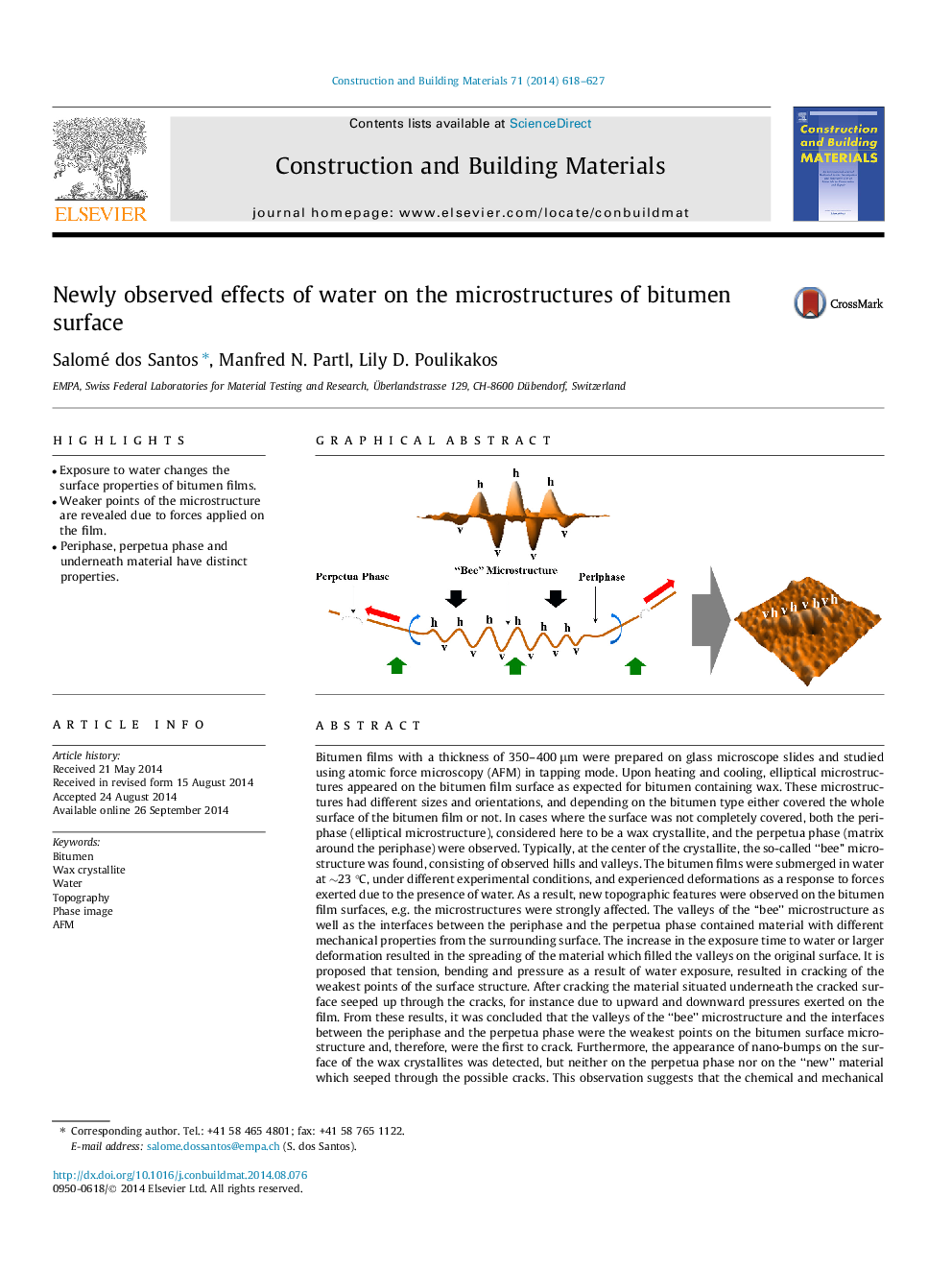| کد مقاله | کد نشریه | سال انتشار | مقاله انگلیسی | نسخه تمام متن |
|---|---|---|---|---|
| 257323 | 503584 | 2014 | 10 صفحه PDF | دانلود رایگان |
• Exposure to water changes the surface properties of bitumen films.
• Weaker points of the microstructure are revealed due to forces applied on the film.
• Periphase, perpetua phase and underneath material have distinct properties.
Bitumen films with a thickness of 350–400 μm were prepared on glass microscope slides and studied using atomic force microscopy (AFM) in tapping mode. Upon heating and cooling, elliptical microstructures appeared on the bitumen film surface as expected for bitumen containing wax. These microstructures had different sizes and orientations, and depending on the bitumen type either covered the whole surface of the bitumen film or not. In cases where the surface was not completely covered, both the periphase (elliptical microstructure), considered here to be a wax crystallite, and the perpetua phase (matrix around the periphase) were observed. Typically, at the center of the crystallite, the so-called “bee” microstructure was found, consisting of observed hills and valleys. The bitumen films were submerged in water at ∼23 °C, under different experimental conditions, and experienced deformations as a response to forces exerted due to the presence of water. As a result, new topographic features were observed on the bitumen film surfaces, e.g. the microstructures were strongly affected. The valleys of the “bee” microstructure as well as the interfaces between the periphase and the perpetua phase contained material with different mechanical properties from the surrounding surface. The increase in the exposure time to water or larger deformation resulted in the spreading of the material which filled the valleys on the original surface. It is proposed that tension, bending and pressure as a result of water exposure, resulted in cracking of the weakest points of the surface structure. After cracking the material situated underneath the cracked surface seeped up through the cracks, for instance due to upward and downward pressures exerted on the film. From these results, it was concluded that the valleys of the “bee” microstructure and the interfaces between the periphase and the perpetua phase were the weakest points on the bitumen surface microstructure and, therefore, were the first to crack. Furthermore, the appearance of nano-bumps on the surface of the wax crystallites was detected, but neither on the perpetua phase nor on the “new” material which seeped through the possible cracks. This observation suggests that the chemical and mechanical nature of the wax crystallites is different from that of the perpetua phase and of the “new” material which filled the valleys.
Figure optionsDownload as PowerPoint slide
Journal: Construction and Building Materials - Volume 71, 30 November 2014, Pages 618–627
